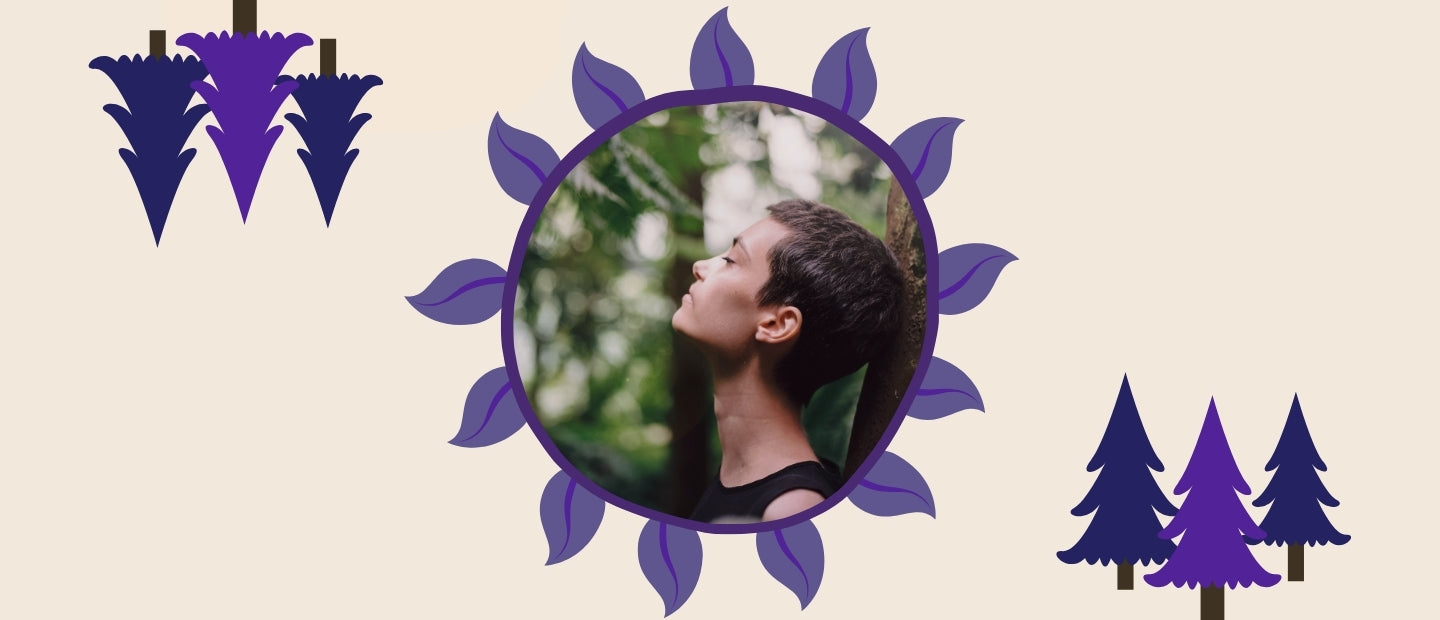Have You Ever Heard of shinrin-Yoku?
After months of confined winter, the need for green, for nature, starts to be felt, and for me, it can even become quite vital.
And it's a good thing because today I want to talk to you about shinrin-yoku, also known as forest bathing, or sylvotherapy.
shinrin-yoku is a medical practice recognized in Japan for its multiple benefits. Neither esoteric nor magical, this practice has its roots firmly planted in the earth and invites you to do the same.
How Does Forest Bathing Works?

The objective of this practice is clear: it is to (hyper) connect with Nature through a walk in the forest in full consciousness.
We pay attention to the paths we take, the trees and rocks we can touch, we can lie down on the ground, observe details like the different shades of green, as well as our sensations throughout the experience. The idea is to use our five senses to the fullest and to be fully present.
Meditating to the sound of birds, bathing in the smell of wet moss... isn't this vision already soothing by its mere evocation?
Let's see... When was the last time you looked at a landscape, listened to a bird sing, breathed in the smell of a flower, caressed a tree trunk, or bit into a piece of fruit?
Proven fact: forest bathing not only allows you to reconnect with Nature but also with yourself. It helps release stress, strengthen your immune system, and will also have an impact on one’s sleep quality and blood pressure.
How to Explain the Effects of Shinrin-Yoku?

One explanation is the presence of phytoncides in the forest air. This molecule produced by trees, which is commonly called "essential oil", has the ability to stimulate the cell regeneration system and lower stress hormones. By breathing in the forest air, we can enjoy the benefits of these molecules.
During these walks, the parasympathetic nervous system - which slows down the body's functions to conserve energy - is stimulated, while the sympathetic nervous system - which is activated in case of stress - is attenuated. This rebalancing of the nervous system allows for a decrease in the level of cortisol (the stress hormone).
And While Waiting for the Excursion Out of Town?

A walk in a park already brings a nice relaxing effect (even if it should be noted that it will be less powerful than actual forest bathing and that the work on the immune system will be less beneficial).
Another possibility during winter or for people who live in the city: you can create a small interior forest with some plants and elements brought back from the forest... This can already have a nice impact on your well-being, especially if you also diffuse essential oils of conifers which will release the same phytoncides as in the forest, and if you listen to a playlist of forest sounds.
A Short History of Shinrin-Yoku
In the early 1980s, the Japanese Ministry of Agriculture, Forestry and Fisheries coined the term "shinrin-Yoku" (literally "Bathing in the forest atmosphere" or "taking in the forest through our senses"), to encourage citizens to take walks in the forest.
In the 1990s, the matter was taken very seriously and Japanese researchers made advanced studies on the physiological effects of forest bathing. Numerous tests are conducted on volunteers and the results are exciting: after just 40 minutes of walking, participants experience a decrease in their stress levels, heart rate, and blood pressure.
And we now know that a two-hour walk in the woods has positive effects for about a week... so it's worth a try, right?










